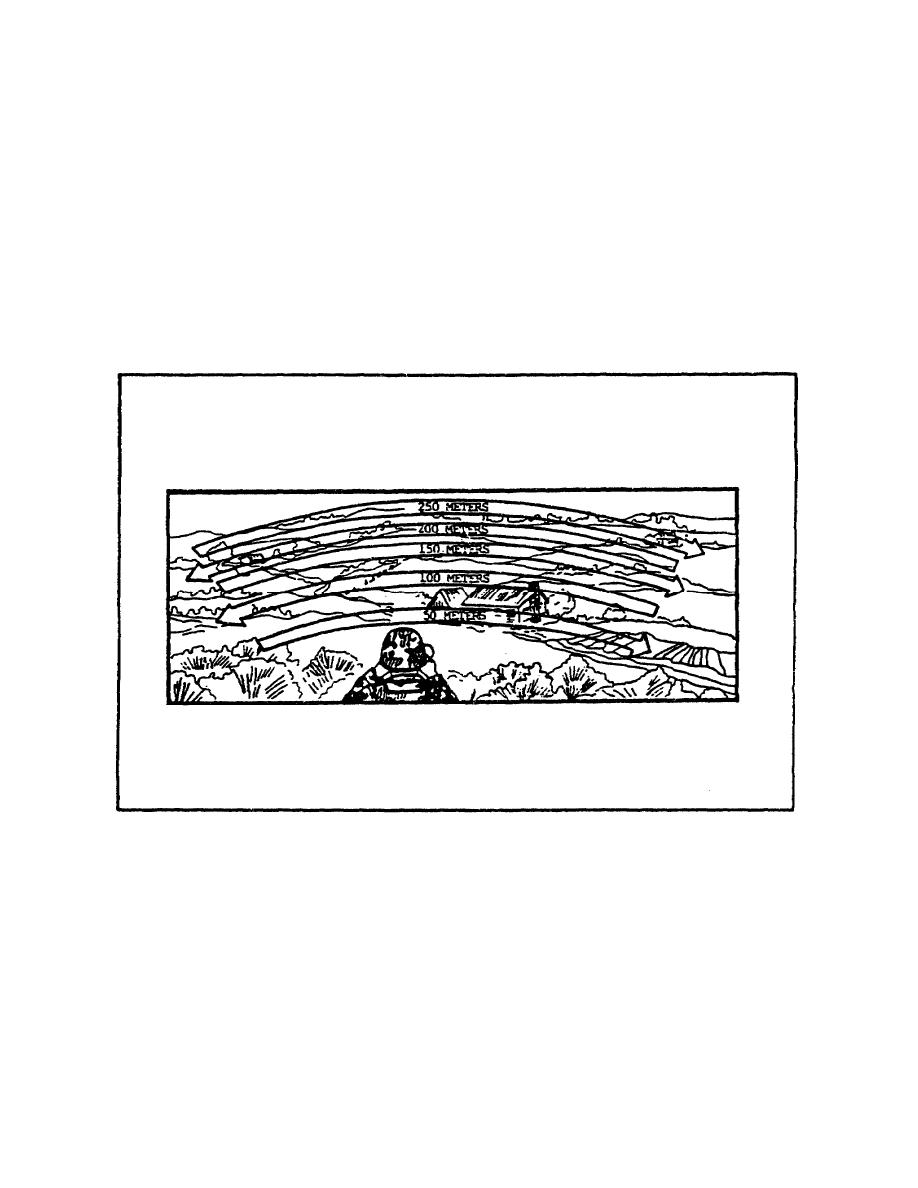
makes drawings. Each of the 50 meter strips should overlap. Figure 1-7 is an illustration of this
technique.
All information must be reported quickly, accurately, and completely. The observer makes sure the
report answers the questions who, what, where, and when. To do this he should use the SALUTE
format.
S - What was the size of the enemy force?
A - What activity were they engaged in?
L - What is the location of the enemy?
U - What type of enemy unit was seen?
T - What time was the enemy seen?
E - What equipment were they carrying?
Figure 1-7. Overlapping 50 Meter Search.
The size of the enemy unit is the number of troops or vehicles seen. The observer reports 10 enemy
infantrymen rather than an infantry squad. He reports three enemy tanks rather than a tank platoon.
The activity they are engaged in is reported by the observer. For example, he saw the enemy
infantrymen laying antipersonnel mines along a trail.
The observer reports where he saw the enemy. This is done using grid coordinates. In an emergency,
he may report the location in references to a key terrain feature. The enemy unit may be hard to
determine. Whatever information is available should be reported; for example, markings or other
distinctive features seen on vehicles. Some countries have special uniforms or headgear. They also
might use colored collar tabs. The observer should
1-19
MP1031



 Previous Page
Previous Page
